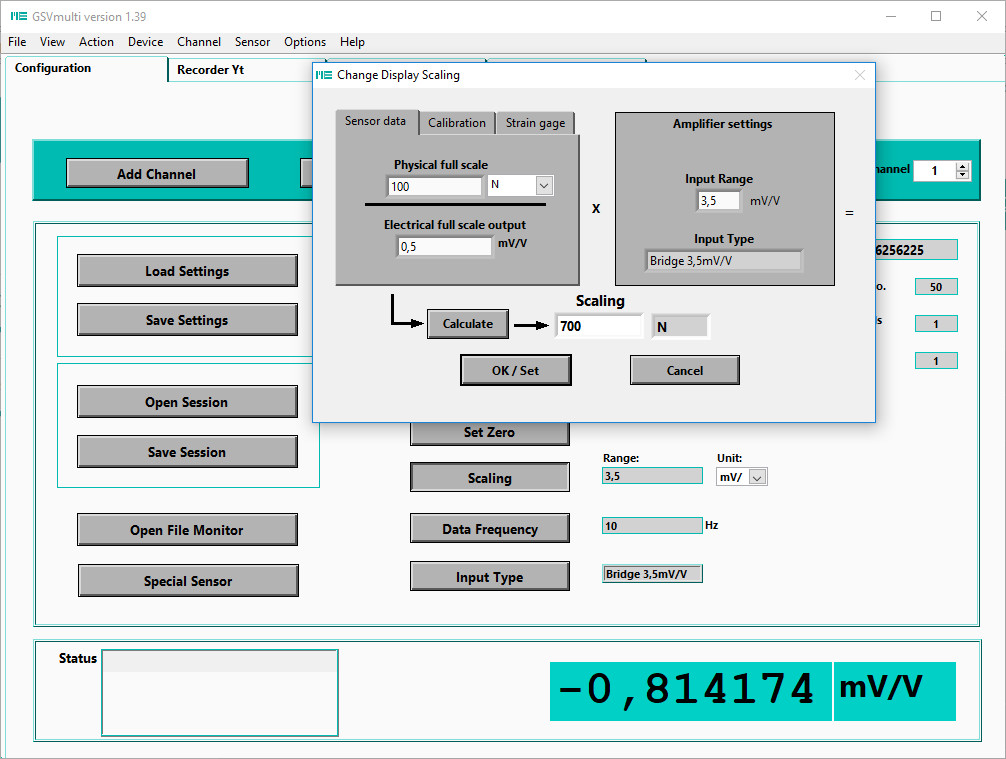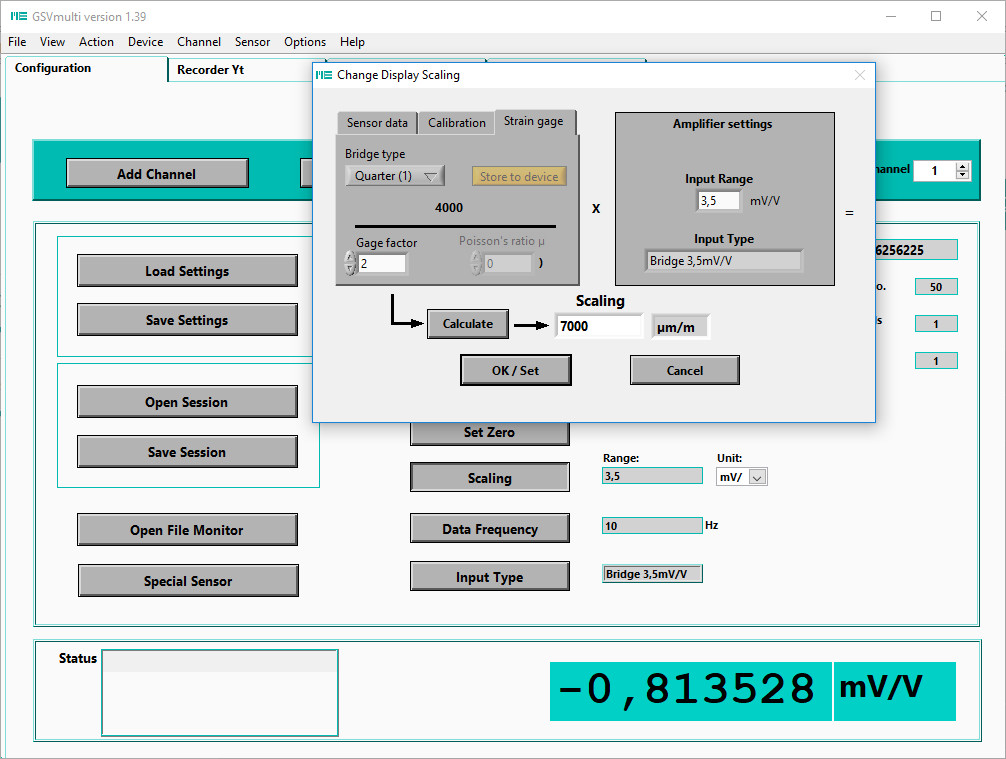Scaling the display and setting of the unit with the software GSVMulti
By display we understand both the display (if available), as well as the display in the software GSVMulti.
Both are set via a common factor: with the scaling factor (for older measuring amplifier models also called "normalization factor") and with the unit.
The unit is just a string, and has no influence on the conversion of the detected measurement data. The scaling factor produces the relationship between the input signal (at the input of the measuring amplifier) and the display (the "output" of the measuring amplifier).
The measuring amplifier at the input has a physical measuring range of e.g. 3.5 mV / V or 2 mV / V or 1 mV / V or 10V. This measuring range ("Range", also often referred to with the synonym "Input sensitivity") is multiplied by the scaling factor ("normalization factor", "measuring range end value").
For a strain gauge quarter bridge, e.g. a strain of 2000 μm/m corresponds to a bridge signal of 1 mV/V. A measuring amplifier with a measuring range of 2 mV/V can display a strain up to 4000 μm/m. Then the measuring range end is reached. A measuring amplifier with a measuring range (with an "input sensitivity") of 3.5 mV/V can display 7000 μm/m (with a strain gauge quarter bridge with gage-factor 2).
Another example: A sensor KD24S supplies 0.5 mV/V output signal at 100N. The "characteristic value" or "the slope" (regarding to VDI Directive 2638) is 0.5 mV/V. A measuring amplifier with a measuring range of 3.5 mV/V can process the characteristic value 0.5 mV/V "7 times" before it goes into saturation, ie 7x100N. The measuring range end value is 700N. The scaling factor "(" Measuring range end value ") is 700 N.
The GSVMulti software provides a calculation aid for the scaling factor. For applications with sensors, but also for applications with strain gauge.
In the measuring amplifier, only the result scaling factor is stored

